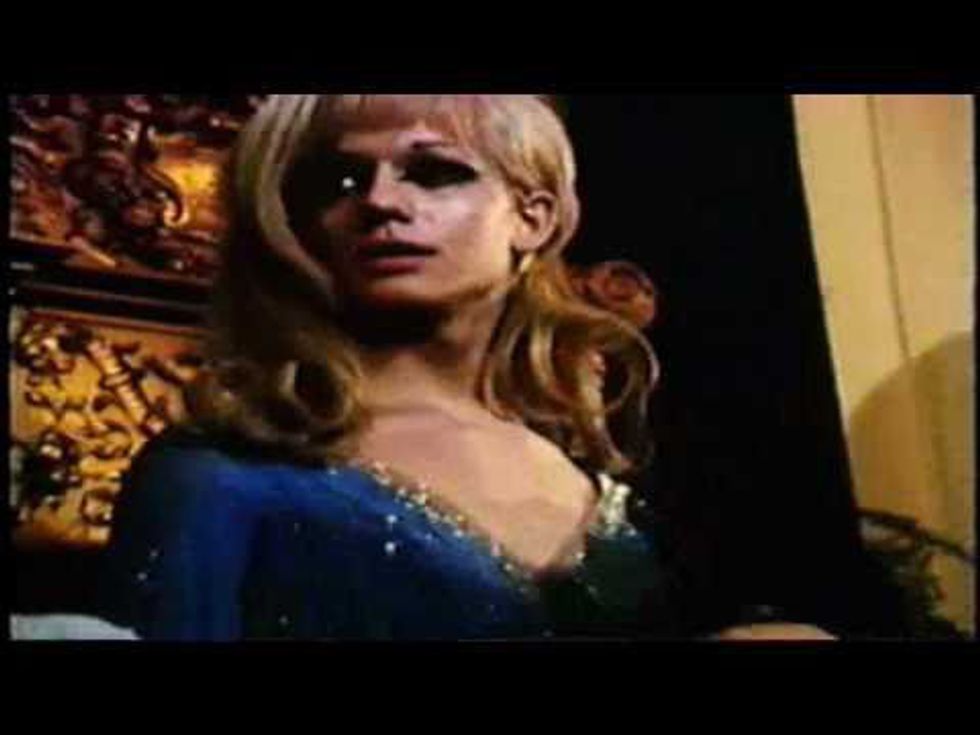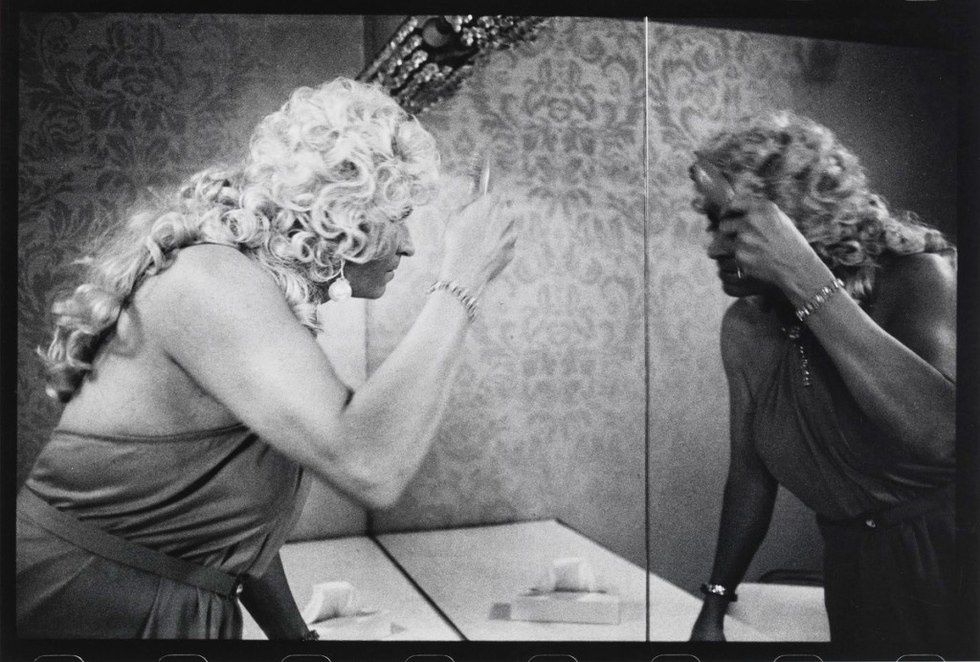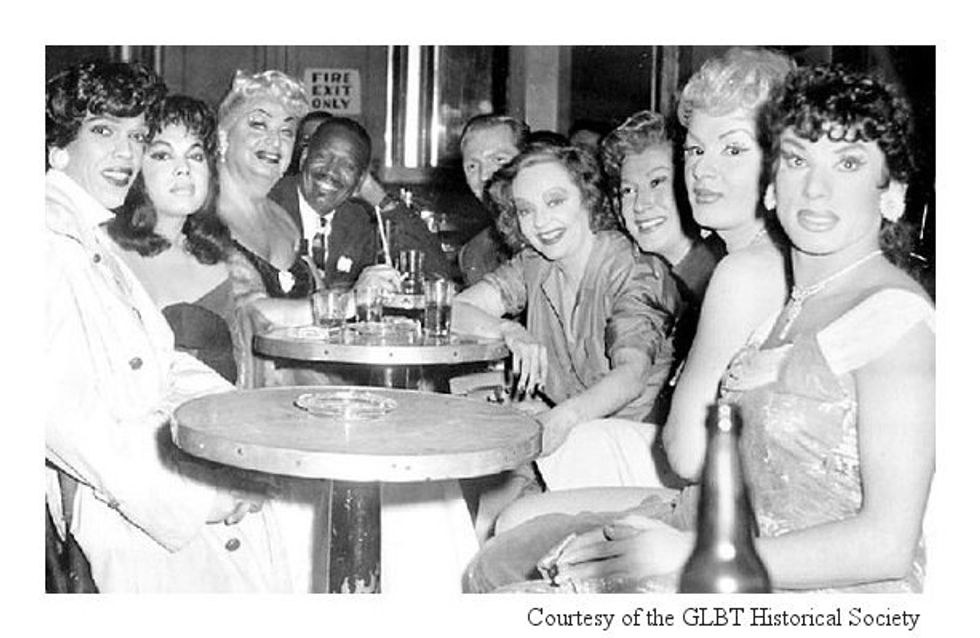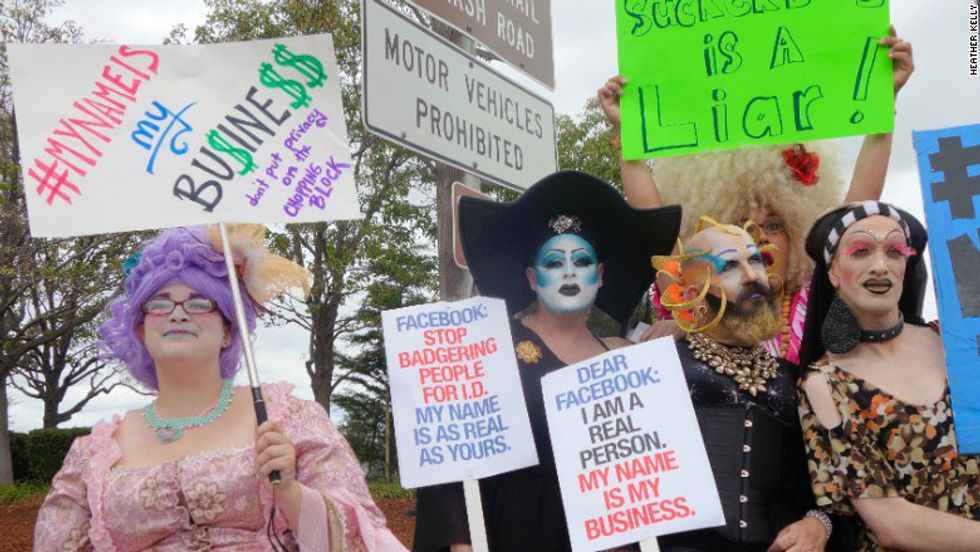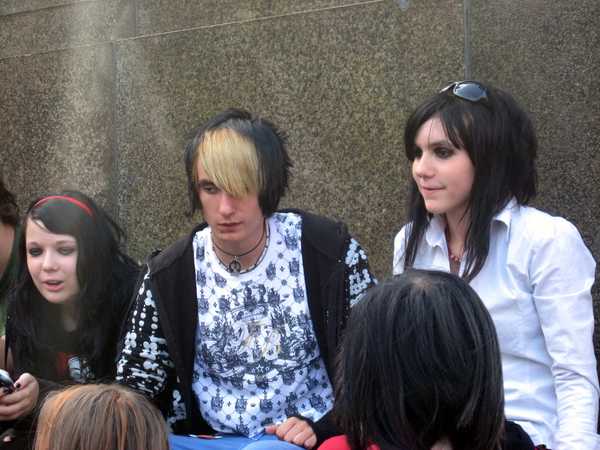Donned in a bedazzled, blue evening gown, with blonde hair styled and makeup applied, Richard Finocchio, under the stage name of Harlow, stepped forward at the 1967 National Drag Show when she was crowned the Reigning Queen of the contest. With thunderous applause, bouquets of roses, and a sparkling tiara, Harlow is a prime example of what a drag queen is. The art of being a drag queen has evolved from the extravagant drag balls in the early 20th century, to the 1960's and 1970's as a method of entertainment, to now as a common establishment within the LGBT community. Behind the glitz and the glam of the drag world is a long history that gay men have created over the decades, where they found a place of comfort and created a new method of expression for themselves, which has evolved into the drag seen today.
The act of cross-dressing has been prevalent in history for centuries, but drag queens came to rise in the early to mid-20th century. Going back to Ancient Rome, cross-dressing was featured in literature as men dressing as women, and going forward to Native-American “berdaches,” who were cross-dressing people that were valued as seers of the world through both female and male perspectives. More well-known is the act of cross-dressing in theater, such as in Elizabethan time when women were banned from the stage. Cross-dressing has been performed for centuries, and it's what has led up to the rise of drag queens in the 20th century. Drag queens started in the Pansy Craze (1930-1933), but were called “pansy performers” instead of queens. The term “drag queen” rose to popularity after World War II, as did the act of being a drag queen. The start of drag queens performing emerged primarily in the 1950's, but it didn't fully become a trend until the 1960's when a solid foundation for the art was established.
The 1960's were the time that the drag queen culture fully crystallized and the understanding of what it took to be a drag queen was known. One of the key differentiates was that the term “transvestite” took on a meaning different from the term “drag queen,” as a transvestite came to be a heterosexual man with a fetish for womens clothing. Drag queens were known as homosexual men who put on womens clothing and act like women, but not out of sexual pleasure. Female impersonators became a synonymous term, “for the sake of the straight world.” They were considered professionals, performing at bars and clubs, and eventually they started to compete in contests for reigning queens. They weren't men who just threw on a woman's dress, but they had tailored gowns and they rehearsed their numbers the way professional entertainers do.
The act of being a drag queen requires maintenance to one's own body and mind, and these young homosexual men in the 1960's embodied the role of queens as professionals. Appearing as a glamorous woman is an art, and drag queens have mastered this. They start with the type of woman they want to embody, whether she's larger than life or is demure and polite. Finding the persona creates the look, and it begins with creating a womanly figure. That can include waist-cinchers, gaffs to tuck genitalia in, shaving, and creating cleavage by pushing their pectorals together and using medical tape around their torso to keep their cleavage in place. Applying makeup is the next step a queen takes, one of the most important because it can transform a masculine face into a feminine one. The use of false eyelashes, eyeliner, bright eyeshadows, lip liner, bronzer, concealer, and mascara are just some of the utensils in creating the queen style makeup. The gown and the wig would come next, and the more expensive then the more realistic and professional. Gowns and wigs also require maintenance in order to prevent them from getting unkempt. Lastly, it's the persona that a queen has to sell in order to be seen as professional. It requires training of mannerisms, body language, and vocals. In The Queen, directed by Frank Simon, all that goes into being a drag queen is seen, and it's an art that the queens mastered over their course of entering the drag queen world.
Behind the doors of hotel rooms and back stages of bars, drag queens have created a community even within the LGBT community itself. Drag shows happened in a venue such as a hotel, and the queens typically shared rooms with each other. When performing in a club or a bar, many mingled together in the dressing rooms back stage. In Drag Queens at the 801 Cabaret, numerous drag queens were interviewed by Verta Taylor and Leila Rupp, and the chapter “We Are Family” had interviews that justify that chapter title. Drag queens develop a sense of family, as their lives were and still are misunderstood. Many homosexuals live a closeted life, but drag queens are a staple of homosexuals, and they exemplify their sexualities with their passion for dressing in drag. Even out of drag, they “walk as though they're still in high heels.” A bond is created between queens, as their world is seen as a “sexual perversion,” and closeted homosexuals who don't dress in drag sometimes don't associate with queens for fear they will be grouped together as a homosexual or a “sexual deviant.” Drag queens have been grouped together with other “sexual deviants” like prostitutes, low class citizens, drug users, and criminals.
However, in neighborhoods like the Tenderloin in San Francisco, California, where crime was high, drag queens flocked there as it was one of the only places they could fit in. In The American Journal of Nursing, Betsy Hague describes her experience working in the Tenderloin in the 1960's.
“This author describes her volunteer work at a hospitality house for young people in the Tenderloin – a district of San Francisco where homosexuals, bisexuals, transsexuals, and drug addicts gather. Like many students today, she wanted to help those whom society shuns.”
Being a 34-block neighborhood, the Tenderloin was a place for outcasts from society to gather, and drag queens found solace there. They either performed in bars and clubs, or they had to work the streets as a prostitute to find money. Hague gives the accounts that the young members of the LGBT community lived in the Tenderloin because it was the only place they could go to live how they wanted, and it was one of the only places where drag queens were widely accepted, or otherwise tolerated.
Drag queens over the long history they've been present have been oppressed by society because of the regulation on gender roles. The reason behind this is brought on by sexism and the relationship between the inferior or superior sex. In Marriage and Family Living, the roles and regulation of men are set up as so:
“In our own culture at least, it is permissible for girls and women but not boys and men to wearcross-sex clothes without social censure.”
It's acceptable for a woman to dress as a man because men are the superior sex. A man dressing up as a woman is fitting “into an inferior role” and is losing his “privileged, masculine status.” Society could understand why a woman, someone who is oppressed, would dress up as a man because it's not “belittling” to be a man. However, in the opposite, it is belittling to be a woman and so society couldn't understand why a man would dress up as a woman and want to be put in an oppressive persona. This regulation can still be seen today, but many modern drag queens have paved the way and diminished some of the regulation.
The popularity of drag queens has risen over the past century because of modern activists and drag queens that have shed new light on the art. In 1969, the Stonewall Riots, most commonly deemed as the start of the LGBT rights movement, was also the start for drag queens and their rights. Many queens took part in the riots, and continued to do so for the years following. Their popularity only grew as the deconstruction of gender roles occurred and as the acceptance of LGBT people spread. Numerous queens stepped forward at the end of the 20th century, most famously RuPaul, who transformed the type of drag into the modern drag seen today. The Sisters of Perpetual Indulgence is one of the groups to come forward and not only dress in drag, but also perform and protest discrimination based on class, LGBT, and other forms of oppression. Being a drag queen has transformed into being more than an entertainer, but also one of many symbols for the LGBT community.
Behind the glitz and the glam of the drag world, gay men have created a long history for their art form of drag, which has provided a sense of comfort and a new method of expression, which is still prevalent in today's society. Although the regulation on gender roles and dressing in drag is still seen today, the rise in drag queens has grown tremendously. Drag queens are more than gay men in womens clothing, but they are human beings expressing their right as citizens to completely be who they are, and their right to the pursuit of happiness.
Simon, Frank; Director. The Queen. Performed by Jack Doroshow, Richard Finocchio, Jim Dine. U.S.A, 1968. Film.
Balzer, Carsten. "The Great Drag Queen Hype: Thoughts on Cultural Globalisation and Autochthony." Paideuma: Mitteilungen Zur Kulturkunde 51 (2005): 111-31. Accessed December 1, 2014. www.jstor.org.
Kirkham, George, and Edward Sagarin. "Transsexuals in a Formal Organizational Setting."The Journal of Sex Research 5, no. 2 (1969): 90-170. Accessed December 2014. www.jstor.org.
Stanley, Julia. "Homosexual Slang." American Speech 45, no. 1 (1970): 45-59. Accessed December 2014. www.jstor.org.
Newton, Esther. Mother Camp. Chicago: University of Chicago Press, 1972.
Rupp, Leila, and Verta Taylor. Drag Queens at the 801 Cabaret. Chicago: University of Chicago Press, 2003.
Hague, Betsy. "In San Francisco's Tenderloin." American Journal of Nursing 69, no. 10 (1969): 2180-2184. Accessed December 2014. www.jstor.org.
Brown, Daniel. "Psychosexual Disturbances: Transvestism and Sex-Role Inversion."Marriage and Family Living 22, no. 3 (1960): 218-27. Accessed December 2014. www.jstor.org.




